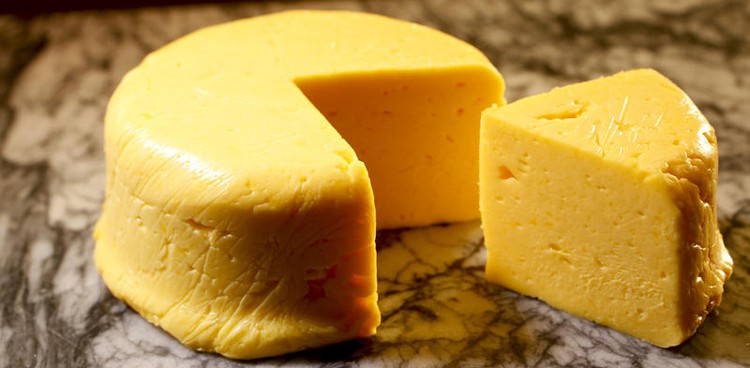
Processed cheese may get a bad rap, but there’s no denying it’s comforting, nostalgic charms. The term “processed cheese” simply means the product started with a type of cheese, but has been further modified with other ingredients to achieve the final (and typically more meltable or spreadable) result. If you’re craving processed cheese, but would like to skip all the questionable additives, try making your own at home — it’s possible, and probably better for your health, too.
Velveeta
Remember when there was that Velveeta shortage? Luckily, you can recreate that well-known melty, oozy cheese in your own kitchen. The reporter who embarked on this project for the LA Times justifies her reasoning for making her own Velveeta, explaining, “Real cheese tends to separate when heated…Processed cheese can take the heat and keep it together, with a glossy sheen to boot.” You can achieve all of those qualities in this recipe, using simple ingredients found at your local supermarket.
American Singles
The cheese that often comes wrapped individually in plastic, known to many as “American cheese,” or simply “singles,” are a mainstay of grilled cheese and griddled cheeseburgers. Brown Eyed Baker tackles a DIY version of this cheese, with glowing results:
The ability to melt supremely well is very important when it comes to such things as grilled cheese sandwiches. Very important. This cheese passed the test with flying colors. I’ll definitely be keeping a block of it in the refrigerator at all times!
Cheez Whiz
Cheese from a can requires quite a bit of scientific know-how, making it the perfect thing to try for people who are interested in molecular gastronomy. Chef Shane Lyons of New York’s Distilled found a way to recreate one of his favorite foods from childhood in a new way, like much of the menu at his restaurant. He starts with a bechamel-style sauce, then adding Gruyere, and finally aerating the cheese in a whipping siphon. “Proteins in the sauce allow the gas to form stable bubbles, and the more gas that goes in, the lighter and airier the whiz becomes,” writes Laura Togut for Serious Eats. The result is a product reminiscent of childhood that you can easily spread on crackers. See step-by-step photos and directions are here.
If you want to see a recipe for a different processed cheese (or any cheese), please contact us. Your idea may be utilized in an upcoming issue of culture!
Photo by Anne Cusack / Los Angeles Times



